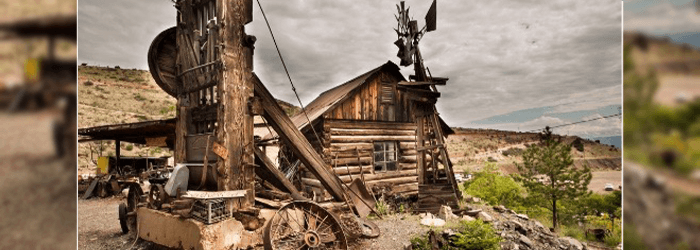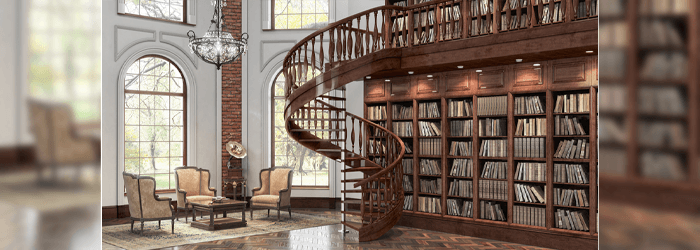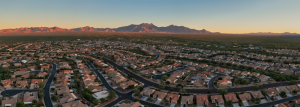Most Arizona Ghost Towns Started With A Mine
With Halloween behind us, we wonder where the ghosts may have gone to roost for the year.
Any of Arizona’s 300 ghost towns is an ideal place to “live” until next Halloween season.
We reached out to some of our state’s most knowledgeable historians to get from them a sense of where to look. Let’s visit them.
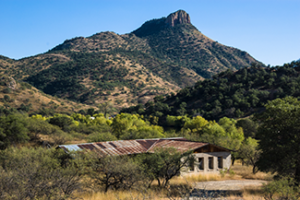 Marshall Trimble, Official Arizona State Historian, says there are several levels of what is considered a ghost town based on the claims made by legend and mystery. Most places in Arizona that are considered ghost towns began as mining claims. The more successful the claim, the larger the town that was built up around that claim. As the ore dwindled, so did the population. Some places were abandoned entirely, such as Ruby. Today, it is a privately held ghost town that can be visited at certain times and requires an entrance fee. Mr. Trimble mentioned this as one of the authentic remaining ghost towns with buildings that still stand, for the most part.
Marshall Trimble, Official Arizona State Historian, says there are several levels of what is considered a ghost town based on the claims made by legend and mystery. Most places in Arizona that are considered ghost towns began as mining claims. The more successful the claim, the larger the town that was built up around that claim. As the ore dwindled, so did the population. Some places were abandoned entirely, such as Ruby. Today, it is a privately held ghost town that can be visited at certain times and requires an entrance fee. Mr. Trimble mentioned this as one of the authentic remaining ghost towns with buildings that still stand, for the most part.
Another example of an abandoned ghost town where ghosts may be present is Two Guns. Just off Interstate 40 between Winslow and Flagstaff, this area was not only a town but also the site of an Apache hideout where the Navajo trapped and killed the Apache raiders in a cave. There are a lot of stories here about their ghosts.
Another form of a ghost town is a “living” ghost town. These are the places where the ore gave out, and some of the people remained. In several instances, the towns remade themselves into tourist attractions revolving around their former glory days. Tombstone is infamous for its tales of a rough wild west. The Boothill Graveyard provides plenty of stories and legends of the nefarious characters who were attracted to the hamlet.
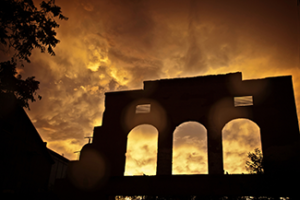 Jerome is another example of a town that successfully remade itself. Jerome boasts of their several haunted buildings such as the Grand Hotel. Mr. Trimble remarked that any historic hotel in Arizona better get themselves a ghost if they don’t already have one.
Jerome is another example of a town that successfully remade itself. Jerome boasts of their several haunted buildings such as the Grand Hotel. Mr. Trimble remarked that any historic hotel in Arizona better get themselves a ghost if they don’t already have one.
Roger Naylor, an author, has visited nearly every ghost town worth seeing in Arizona. We asked him for a few of his favorites. As with Marshall Trimble, Ruby was near the top of his list. He noted Ruby was the site of three double murders between 1920 and 1922. Those ghosts might still be wandering there. Also on his list is Fairbank. This town developed around an old railroad stop north of Tombstone. Easy to access, it supports several buildings, hiking trails to an old mill site, and a graveyard. Mr. Naylor also talked about the “Ghost Town Trail”. This is a string of towns starting with Gleeson, moving north to Courtland, and ending up in Pearce. Along this route, you can check out a territorial jail, old stores, the skeleton of the town’s buildings, and a great ol’ cemetery loop road.
Generally, Southern Arizona has the best-preserved buildings and graveyards. The desert conditions help this effort by slowing down the deteriorating effects weather has on the structures. The adobe walls found in many sites, are slow to erode even after the valuable lumber that made up the roof structure was removed for use elsewhere, (early recycling, perhaps).
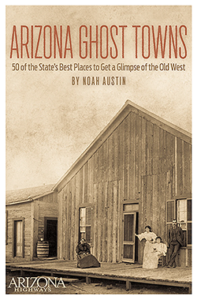 Arizona Ghost Towns, published by Arizona Highways, author and managing editor, Noah Austin, approaches the subject slightly differently. The focus of his book trends to the more obscure ghost towns. How many of us have heard of Humbug? Most of the ghost towns in his book have GPS coordinates. Use it as guidebook, (except Humbug, which is just too difficult to navigate). When asked about ghosts in ghost towns, Mr. Austin says while he has never seen a ghost, there were plenty of times “the creepy vibe” was added to his explorations. He recalled one such vibe experience in a place called Camp Rucker. A late 1800s Army encampment near the Chiricahua Mountains, Camp Rucker was renamed after a lieutenant who tried to rescue a fellow soldier from a flooded creek and drowned. After the Army left, the camp became ranching headquarters. While walking through the old ranch house, the “creepy vibe” was a definite companion for Mr. Austin.
Arizona Ghost Towns, published by Arizona Highways, author and managing editor, Noah Austin, approaches the subject slightly differently. The focus of his book trends to the more obscure ghost towns. How many of us have heard of Humbug? Most of the ghost towns in his book have GPS coordinates. Use it as guidebook, (except Humbug, which is just too difficult to navigate). When asked about ghosts in ghost towns, Mr. Austin says while he has never seen a ghost, there were plenty of times “the creepy vibe” was added to his explorations. He recalled one such vibe experience in a place called Camp Rucker. A late 1800s Army encampment near the Chiricahua Mountains, Camp Rucker was renamed after a lieutenant who tried to rescue a fellow soldier from a flooded creek and drowned. After the Army left, the camp became ranching headquarters. While walking through the old ranch house, the “creepy vibe” was a definite companion for Mr. Austin.
The authors we spoke with agree with how a ghost town comes to be and the most popular ones as well. All in all, there are plenty of places in Arizona where our ghosts can retire. Each of the authors has written informative and entertaining books on the subject. Google their names for a plethora of information. Whether you are new or native to Arizona, you will learn something from each of these fellows about Arizona’s history as our ghost towns speak to it.
So, if you like spooky thrills year-round, Arizona’s ghost towns have you covered!
###
PODCAST
From mining camps to military posts, Arizona’s frontier past is featured in Arizona Highways Managing Editor Noah Austin’s book Arizona Ghost Towns. Featuring 50 sites with fascinating history, detailed driving directions, GPS coordinates and more for each featured ghost town. Rosie, Romey and Noah have a ‘spirited’ discussion of their favorite places and how to prepare for your adventure to see these ghost towns.
Podcast Archive With Expanded Content and Resources
PHOTO CREDIT
- Arizona Highways
- Shutterstock

